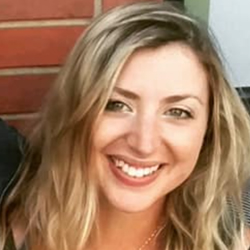A walrus named Freya has just died in Norway. Not because of an ongoing health issue, or old age, or a freak accident; Freya was killed. On August 14, Frank Bakke-Jensen, the Director General of Fisheries, said the decision to kill her was based “on an overall assessment of the continued threat to human safety.” Freya lived at Oslo fjord, an inlet in the south-east of Norway. Before holding any of the humans accountable for aggravating potentially aggressive behavior, she was deemed a threat on her own turf, in her own water, at her own home.
People Interacted with Freya despite Warnings
Despite adamant warnings, people had continued to get too close, putting her and themselves at risk of physical harm. Walruses are not typically known to be aggressive towards humans, unless provoked. For example, at a wildlife park in China in 2016, a tourist and a zookeeper were killed by a walrus, but the tourist was reportedly taking selfies with the walrus when he was grabbed and pulled underwater. When the keeper attempted to rescue him, he was also pulled under.
On one occasion, police blocked off an entire bathing area at Oslo fjord after 1,300-pound Freya chased a woman into the water. A photograph taken just the week before she was killed showed a group of people, including young children, standing within touching distance of her. Other reports demonstrated people swimming with her, throwing things at her, regularly attempting to take selfies with her, and surrounding her in large numbers.
Freya Was Considered Disposable
According to Fishery officials, other options had also been considered, including relocating her, but they were discarded “out of concern for her welfare.” Why choosing to kill her was deemed the best decision to preserve her welfare, however, remains unclear, when this deprived her of any chance to achieve better welfare in the future.
A senior adviser to Norway’s environmental agency and nature inspectorate, Espen Fjeld, stated that animals could be dangerous and that it was sometimes necessary to “put them down, as long as that does not endanger the survival of [the] population. There are 30,000 walruses in the north Atlantic.”
To put it simply, Freya was killed because people could not follow directions and keep a respectful distance from her in her natural environment. She was killed because of ignorance, entitlement, and a complete disregard for her autonomy as a living being. Had there been fewer of her species left in the wild she may have been spared. But because her life was not considered valuable enough, she did not live to see another day.
Calling Freya’s Killing “Euthanasia” Absolves Humans of Blame for Her Death
Of the many issues that Freya’s death raises, one is the use of the term “euthanasia” in these circumstances. Using this term in inapplicable situations is problematic because it normalizes killing animals—both those held captive and those in the wild—for human benefit. Euthanasia means the humane killing of an animal when disease or injury conditions that reduce an animal’s quality of life to an exceptional and irreversible degree or create pain and suffering that cannot be relieved by medical means. Disposing of perfectly healthy animals considered a nuisance is not euthanasia, it is simply killing.
Yet, numerous news articles refer to the death of Freya as “euthanasia” just in their titles: CNN: “Norway euthanizes beloved 1,300-pound walrus named Freya;” ABC News: “Video Norwegian officials euthanize Freya the walrus;” The Washington Post: “Freya the walrus euthanized after drawing crowds to Norway fjord.” The list goes on.
Using the term “euthanasia” implies that it was necessary in Freya’s situation. It was not. “Euthanasia” is used all too frequently by animal management organizations and zoos (often in the case of “surplus” animals) to minimize the severity of the situation and the corresponding responsibility of those involved in making that ultimate, irreversible decision. This occurs regularly when human-caused factors create problematic situations in the first place, including environments that enable dangerous wild animals to come into unnatural close contact with humans.
“Euthanasia” has power in that it removes the blame from the humans involved and replaces it with righteousness.
“Euthanasia” has power in that it removes the blame from the humans involved and replaces it with righteousness. We must question this word and how its usage extensively and continuously to ensure that these practices are protecting animals from harm and suffering, not inducing it. And, as always, to help in advocating for those that do not have a voice of their own. Every animal, no matter their conservation status or perceived value, deserves the opportunity to live.
Keep Wildlife in the Wild,
Devan
